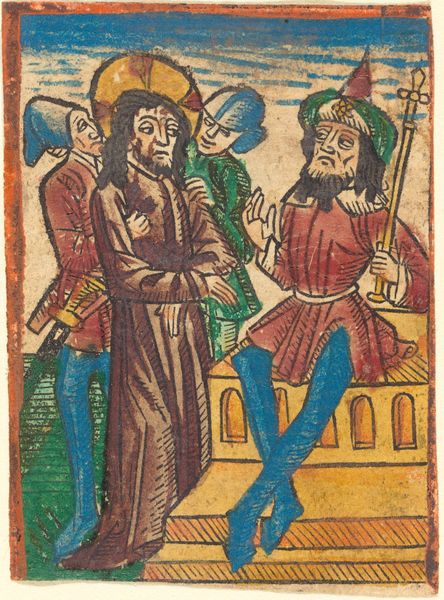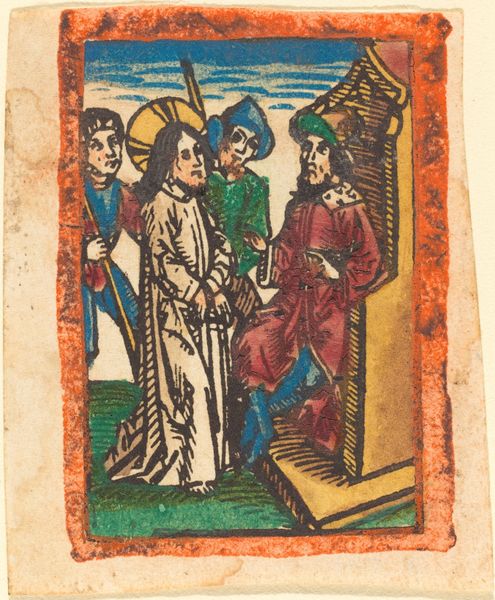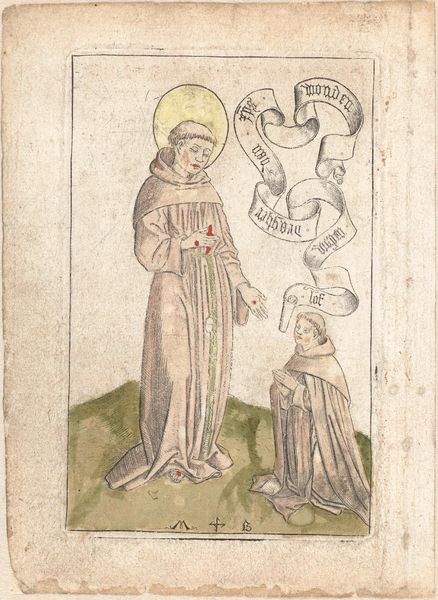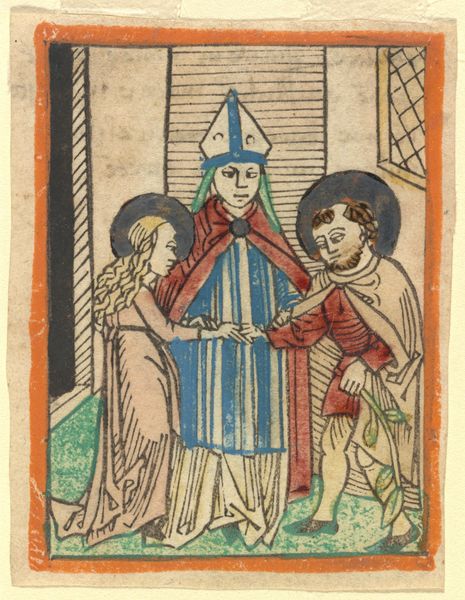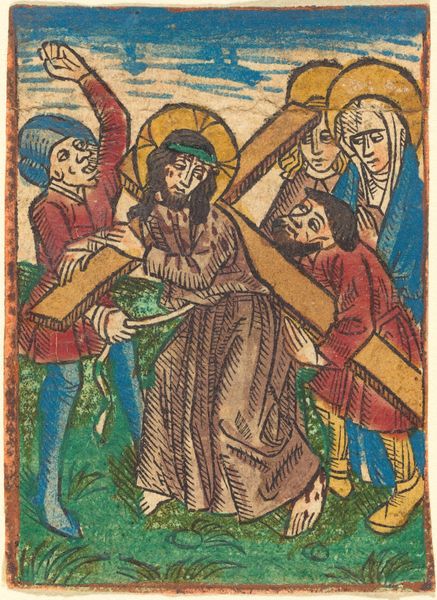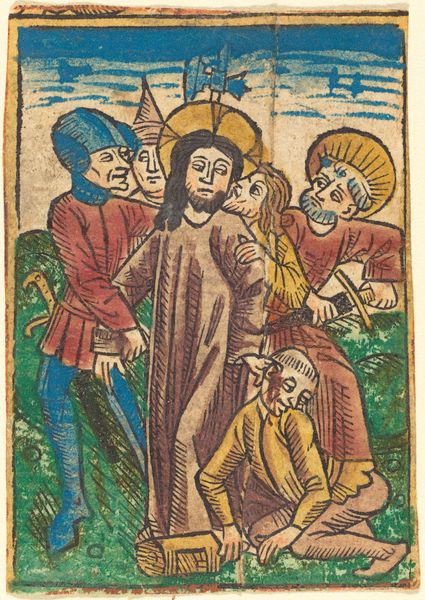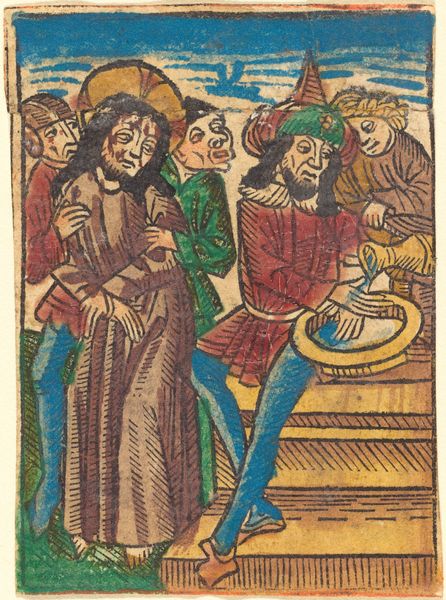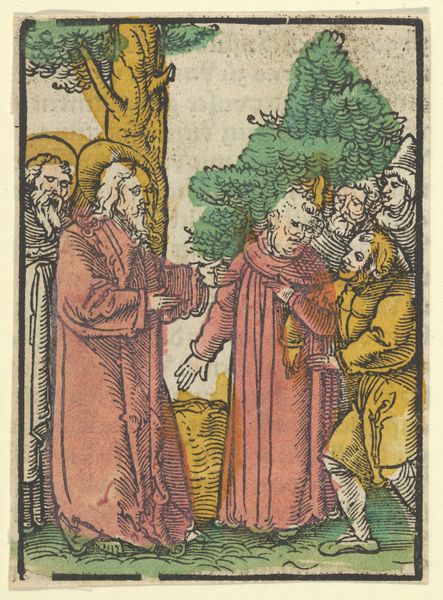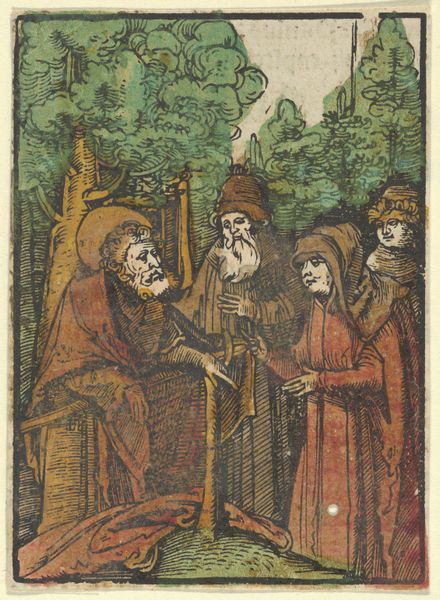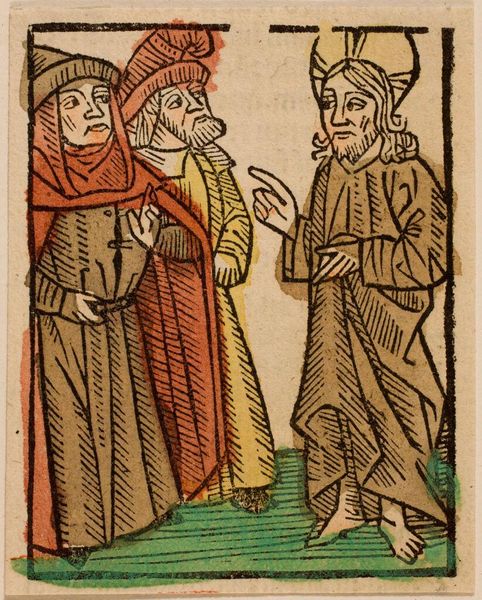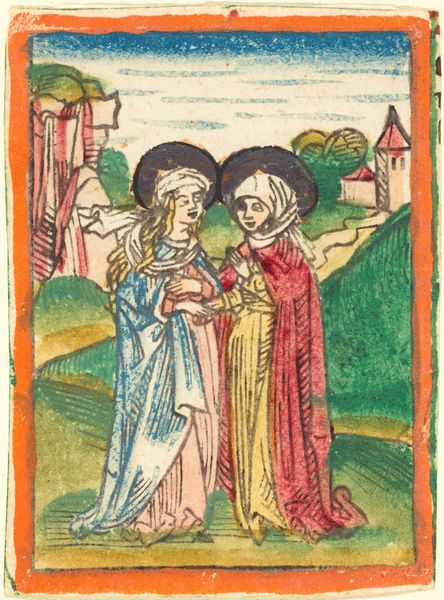
coloured-pencil, tempera, print
#
coloured-pencil
#
medieval
#
tempera
# print
#
figuration
#
coloured pencil
#
history-painting
#
miniature
#
watercolor
Copyright: National Gallery of Art: CC0 1.0
Curator: Here we have "Saint Francis and Saint Clara," a work of tempera, watercolor and coloured pencil made sometime between 1450 and 1470 by an anonymous artist. Editor: The initial impression is one of austere devotion. The composition, divided vertically, isolates each figure in contemplation and displays the materials simply on a flat surface. Curator: Indeed. Note how the artist manipulates colour and line. The flat, muted tones emphasize the subjects’ humility, while the controlled line work gives clarity to their forms. Observe the way the artist has deployed watercolour alongside tempera. It’s an interesting choice in this period, subtly contrasting translucence with the matte texture of tempera, thus differentiating the two. Editor: Let's consider the materiality further. Given the presumed constraints in accessing finely ground pigments, how did they manage the deep saturation in areas like Saint Francis' habit or the dark halos surrounding both figures? It pushes against any assumptions of straightforward, unskilled application. Also, I can't help but wonder how the collaborative efforts within the workshop would inform the final product. Curator: The symmetry and balanced composition contribute significantly. Note the correspondence between their gazes and gestures. Editor: Precisely. This echoes the broader aesthetic codes in medieval imagery that privilege spiritual intent. There are also other cultural dimensions at play here. The figures, identifiable as Saint Francis and Saint Clara from their respective attributes—Francis holding a crucifix and Clara carrying a monstrance, are representative of different paths to Christian worship—active and cloistered respectively. This might be speaking to the socio-religious contexts. Curator: Yes, we discern the artist's theological aims, reinforcing themes of prayer, poverty, and adherence to faith through stylistic restraint and symbolic emphasis. It's a compelling dialogue expressed via pure, formal devices. Editor: It shows how an exploration into materiality reveals not just how an artwork looks, but how a historical context becomes indelibly bound up with creative production itself. Curator: Thank you, both paths have allowed us a great insight into this devotional work.
Comments
No comments
Be the first to comment and join the conversation on the ultimate creative platform.
